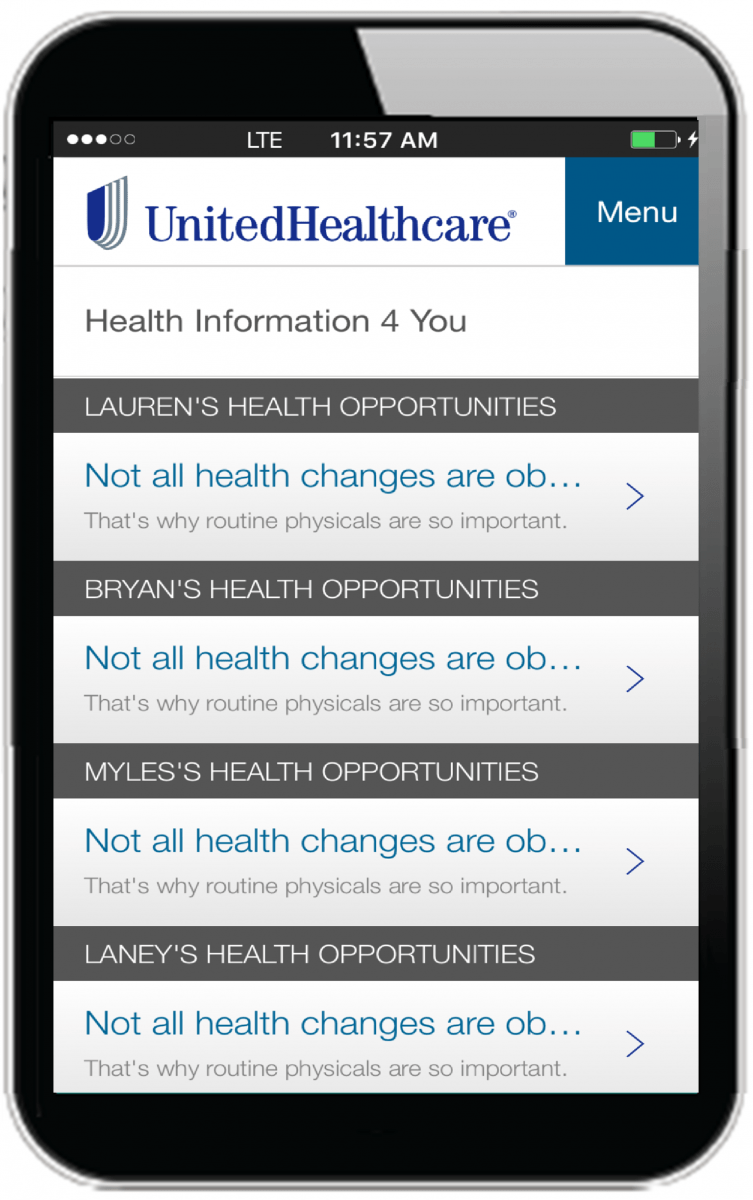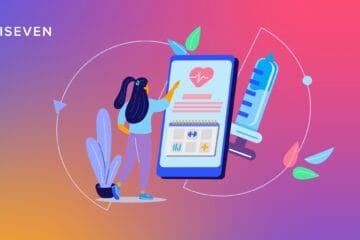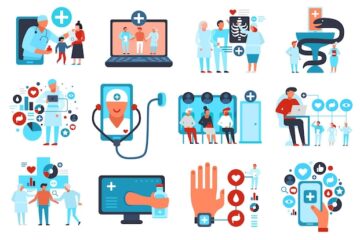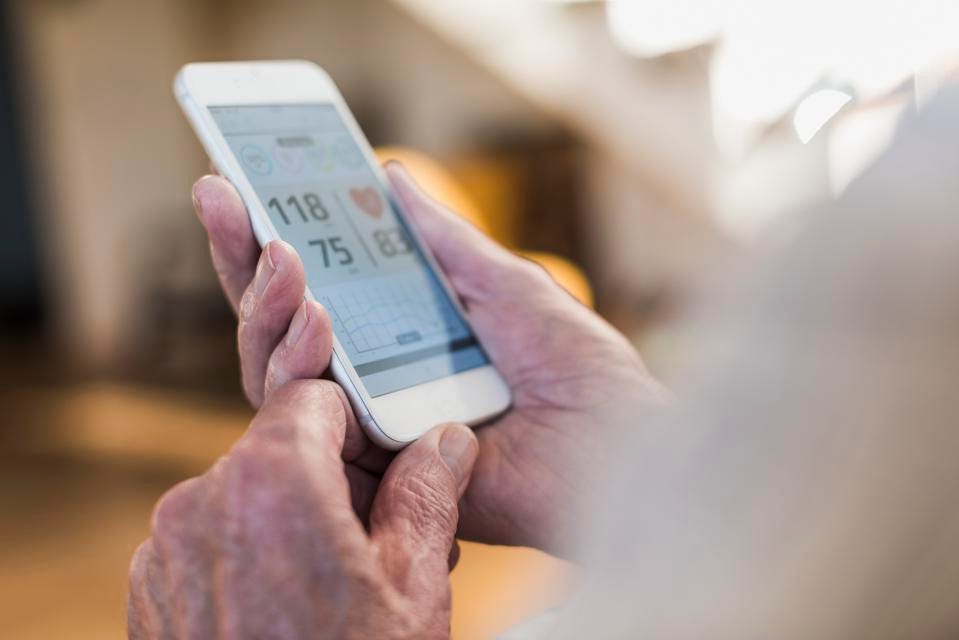
United Healthcare has made some updates to its Health4Me app to help make wading through health services a little less like a chore and more like spending time on any other mobile app.
The updated Health4Me automatically sends care alerts to UnitedHealthcare plan participants if they are missing important medical treatments or tests. Several updates also help patients better follow treatment guidelines, search for a health care provider or schedule appointments. The update also includes the added security measure of Apple Touch ID for medication management and service price comparisons, and the ability to use Apple Pay to purchase services.
The idea is to get more patients engaged, more often with their health care plans by making it more like any other highly used app, Craig Hankins, UnitedHealthcare’s vice president of digital products, told MobiHealthNews. Additionally, making patients more of a part of the decision-making process can take some of the confusion out of healthcare planning.
“We strongly believe that, as people are trying to build out their busy, daily lives, they have mobile moments.” Hankins said. “They are line for something like the supermarket, they may have one or two minutes, they can check a claim or now even refill a prescription while they are thinking about it and be more productive.”
The added medication management tools are a good opportunity for something else, too: to spark conversation between doctor and patient. Since the app has a medical service price transparency tool and a prescription transparency tool, the user can quickly go into the app even during a visit with a doctor and explore alternatives, or at least know what they are getting into ahead of time.
“These are moments of, ‘Can we inform the decisions while they are actually being made?’ or close to being made, by delivering that information as conveniently and understandably as possible,” Hankins said.
Users can also shop for services in the app.
“With the price transparency, we’ve had a long arc with that tool, and we now have 875 accessible services of which to get personalized cost estimates for medical care,” Hankins said. “Eight hundred seventy-five services that our clinical team has deemed ‘shoppable,’ meaning that people have a chance to really kind of plan for this.”
The app itself is not new – it first launched in 2012 – but the notification updates make it an almost different app altogether, said Hankins, who says the updates build on the success of the first model and deliver on the newer commitment the company has to different populations. The app originally launched with a commercial, employer benefits market, but expanded last year to add Medicaid populations.
“The app flexes based on the product you have,” Hankins said. “As we were learning this population, we continued down that path and sought to enhance Health4Me to better meet the needs of everyone.”
Hankins said the plan notification updates were crucial, as UnitedHealthcare is monitoring coverage with the aim to help users realize where they have gaps in care.
“This is key because it’s a new way in which we have to reach people,” Hankins said. “In the past, we would call or send paper-based mail, but with mobile becoming more and more central, especially with the Medicaid population, it’s the best way to reach them. They may not have an email address, but they certainly have a smartphone.”
Not only is UnitedHealthcare working to make sure patients know what their coverage does and doesn’t include, the number of states where the company works is also growing.
“It’s really about trying to fulfill that mission and the commitment we have when we are awarded business by a state. We have 17 states in which we participate in the Medicaid plan,” he said. “Part of that is, Medicaid is looking for us to improve the health of that population, so that’s all part of our broader set of efforts.”
The added security features enable more peace of mind, but also make the app easier to use. Rather than having to enter a password each time they want to access personal health data or purchase a service, the Apple Touch ID enables them to do it effortlessly, which Hankins called a “nice win for members.”
And while physicians may not have a lot of extra time to price shop drugs and services with their patients, Hankins sees the potential for more conversation between doctor and patient to be largely beneficial.
“The physician community is increasingly aware that out-of-pocket costs, even for those who are insured, are growing, and it’s impacting their practice, too,” he said. “We would hope that any opportunity to inform he physician-patient conversation that leads to the same or better clinical outcome at a lower cost is something that everyone in the health system would support.”
While Hankins said he’d heard of scenarios of a patient whipping out the app during a doctor visit to price shop for service such as an MRI, plus taking the opportunity to have a more meaningful discussion with their physician, accounts like this are still anecdotal and it’s too early to tell how much the doctor-patient interactions will change. But, he said, it’s increasingly clear to both parties that patients want the ability to plan ahead, shop around, and get the best price for a larger and larger set of services.
“It’s labs, it’s tests, it’s offices, it’s even things like childbirth, which is one of our most popular services,” Hankins said. “You have a really engaged patient and they are really being thoughtful. That’s one of the things that we’ve really been able to answer: what are people shopping for with care that they are planning?”
[Source:-MOBI HEALTH NEWS]




